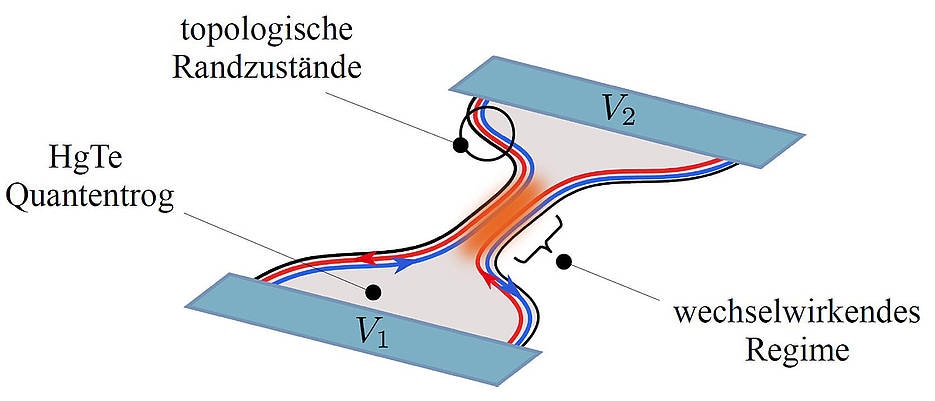Oct 29 2019
A revolutionary discovery has been made by physicists at the University of Würzburg who have developed a fundamental nanoelectronic device based on the topological insulator HgTe discovered earlier in Würzburg.
 A quantum well narrows in the middle to a quantum point contact. Würzburg physicists have produced this device using new methods of nanostructuring. (Image credit: Christoph Fleckenstein/Universität Würzburg)
A quantum well narrows in the middle to a quantum point contact. Würzburg physicists have produced this device using new methods of nanostructuring. (Image credit: Christoph Fleckenstein/Universität Würzburg)
Topological insulators are materials with surprising properties: Electric current flows only along their edges or surfaces, while the interior of the material acts as an insulator. In 2007, Professor Laurens Molenkamp at Julius-Maximilians-Universität (JMU) Würzburg in Bavaria, Germany, became the first to experimentally show the presence of such topological states.
He and his colleagues realized this seminal work using quantum wells based on mercury and tellurium (HgTe). From that time, these unique materials have been a source of optimism for an essentially new generation of components that, for instance, exhibit the potential for innovations in information technology.
For the first time, physicists at JMU have been successful in creating an important element for such components—a Quantum Point Contact (QPC). They describe the success in a recent publication in the journal Nature Physics.
Confinement for Topological States
QPCs are quasi-one-dimensional (quasi-1D) strictures in otherwise 2D structures with a thickness of only a few atomic layers. In topological HgTe quantum wells, wherein the conducting states are situated entirely at the edges, these edge states are spatially joined at the QPC. This closeness enables the investigation of possible interactions between the edge states.
This experiment could only work because of a breakthrough in our lithographic methods. It has enabled us to create incredibly small structures without damaging the topological material. I am convinced that this technology will enable us to find impressive, novel effects in topological nanostructures in the near future.
Laurens Molenkamp, Professor, Julius-Maximilians-Universität
Anomalous Conductance Behavior Through Interaction
The JMU physicists used a modern manufacturing process and successfully structured the bottleneck specifically, exactly, and gently. This technological advancement enabled them to functionalize the system’s topological properties.
In this regard, for the first time, a team led by Professors Laurens Molenkamp and Björn Trauzettel could demonstrate the effects of interaction between the various topological states of a system using anomalous conductance signatures. The JMU scientists credit this particular behavior of the investigated topological QPCs to the physics of 1D electronic platforms.
Interacting Electrons in One Dimension
The investigation of electronic associations in one spatial dimension reveals that electrons move—in contrast to two or three spatial dimensions—in an orderly way. This is because there is no chance of “overtaking” the leading electron. In this case, the behavior of electrons can be compared to pearls on a chain.
This unique property of 1D systems paves the way for stimulating physical phenomena.
The interplay of strong Coulomb interaction and spin orbit coupling is rare in nature. I, therefore, expect this system to yield fundamental discoveries in the coming years.
Björn Trauzettel, Professor, Julius-Maximilians-Universität
Outlook for Future Research
Topological QPCs are a basic component of numerous applications that have been predicted in theory in the last few years.
A specifically obvious example of this kind is the probable realization of Majorana fermions, predicted by the Italian physicist Ettore Majorana in 1937. A potential application in association with topological quantum computers is linked to these excitations.
For this reason, it is of great significance not only to identify Majorana fermions but also to be able to regulate and manipulate them as required. The topological QPC, first executed at JMU Würzburg, offers a stimulating viewpoint in this regard.